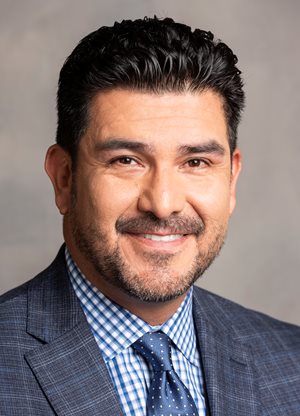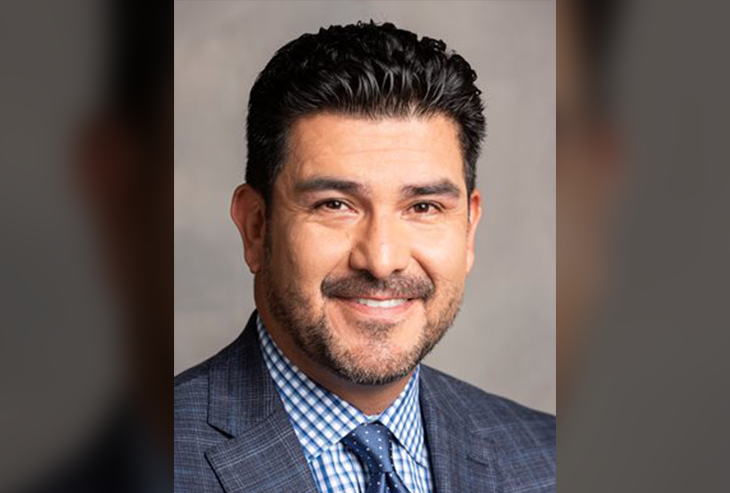This column by Assistant Professor Israel Balderas and reporter Kathryn Foxhall was distributed by the Elon University Writers Syndicate and was published by the Burlington Times-News and Restoration Media outlets including The Butner-Creedmoor News.
By Kathryn Foxhall and J. Israel Balderas
Right now, we’re having a vibrant national debate about governments at all levels using their might to suppress speech. One such case now pending at the U.S. Supreme Court will either expand or reduce individual freedom.

In the case of Murthy v. Missouri (originally Missouri v. Biden), this legal fight delves into the First Amendment, the federal government and the world of social media. Missouri and Louisiana accused the Biden Administration of stifling political views. After a preliminary injunction, the case reached the Fifth Circuit Court of Appeals, which found government coercion of social media moderation violated the First Amendment. The Supreme Court has agreed to hear the case.
However, amid this legal battle, another long-standing form of government information control remains largely unnoticed. It’s a practice that affects not just social media but also how journalists access government information.
In many government agencies and similar institutions, public employees are barred from talking with journalists without notifying the agency’s public information office. To some, this may seem a bit bureaucratic, but in practice, it inhibits confidential communications between subject-matter experts and reporters. Such interaction is a critical conduit for public understanding of government work.
Once reporters seek permission to engage with these employees, government officials decide whether to grant access and determine “permissible” topics for news consumption. This bottleneck controls interactions between reporters and agency staff, giving rise to additional restrictions like mandatory monitoring by public information officers, limited briefings, or constraints on questions and time allotted.
These controls extend beyond federal agencies, infiltrating state and local governments, schools, organizations and businesses. At all levels and branches of government, reporters are now routinely denied routine access to public buildings.
Why does this matter?
This issue strikes at the heart of democracy and the vital role of journalism. The public’s right to know what its government is doing is a cornerstone of a functioning democracy. When reporters face obstacles in gathering public information directly from government employees, it undermines transparency and accountability.
Let’s go back to the social media court case. This legal battle offers a connection to the debate over government influence on social media platforms. Just as we scrutinize government actions on the digital front, we must also address the suppression ingrained in our culture for the sake of democracy, free speech and institutional integrity.
In a world grappling with existential threats, from pandemics to climate change, we need institutions that function optimally. The culture of information control could be history’s deadliest norm. Reporters with access to relevant individuals could provide crucial perspectives.
Why, then, is there no uproar from the press about these controls?
For one, many journalists believe that “good reporters get the story anyway.” While true to some extent, such a mindset ensures that the press obtains only “some” stories, rather than “the” stories. In today’s fast-paced news environment focused on producing new content daily, critical stories may remain undiscovered.
Also, the lack of resources for reporting exacerbates the problem. However, this scarcity is amplified by pervasive impediments to newsgathering, such as government gag rules.
Another reason for the lack of visibility of these controls is the absence of disagreement among those in power. Many authorities endorse these muzzle orders and want to maintain them. This shortsighted approach may provide temporary comfort, but it forces organizations to rely on information filtered in unknown ways by countless imperfect leaders in various institutions.
Despite these challenges, some pushback against speech restrictions is underway. In 2019, an extensive legal analysis from the Brechner Center for Freedom of Information declared these controls unconstitutional and said many courts have previously concurred. Journalists can initiate legal action to challenge these restrictions.
For example, investigative reporter Brittany Hailer sued the Allegheny County Jail in Pennsylvania in August, alleging there was a ban on employees and contractors from speaking to reporters even while there was a high prisoner death rate. She is represented by the Yale Law School Media Freedom and Information Access Clinic and the Reporters Committee for Freedom of the Press.
Certain media outlets are also investigating such blockades in their regions. The Louisville Courier-Journal discovered that 70% of policies from 35 Kentucky agencies restrict or prohibit employees from communicating with news outlets.
While the issue of social media platforms and government influence deserves attention, the existing culture of coercion by all kinds of state actors – from government employees to elected leaders – is equally corrosive.
In a world where information is power, where our ability to make informed decisions hinges on our access to diverse perspectives, we must demand change. We must confront both the suppression of free speech on social media and the insidious information control within our institutions, for they are intertwined threats to our democratic values, our right to know and our capacity to hold the powerful accountable.
—
Kathryn Foxhall is a veteran reporter based in Washington, D.C., with a long-term focus on Congress and federal agencies. J. Israel Balderas is a media law attorney and assistant professor of journalism at Elon University. Views expressed in this column are the author’s own and not necessarily those of Elon University.



